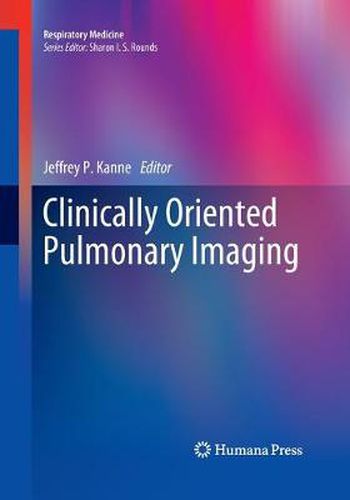Readings Newsletter
Become a Readings Member to make your shopping experience even easier.
Sign in or sign up for free!
You’re not far away from qualifying for FREE standard shipping within Australia
You’ve qualified for FREE standard shipping within Australia
The cart is loading…






This title is printed to order. This book may have been self-published. If so, we cannot guarantee the quality of the content. In the main most books will have gone through the editing process however some may not. We therefore suggest that you be aware of this before ordering this book. If in doubt check either the author or publisher’s details as we are unable to accept any returns unless they are faulty. Please contact us if you have any questions.
Diagnostic imaging is an essential component in the evaluation of the patient with known or suspected respiratory tract disease. While chest radiography continues to serve as the primary tool for imaging the chest, advances in computed tomography (CT) have led to a variety of applications such as high-resolution CT (HRCT), advanced 3-D airway imaging, and image-guided procedures.
The aim of this book is to deliver a clinically-oriented approach to pulmonary imaging. Each chapter of the book will provide an organized approach to the different facets of imaging of specific clinical scenarios, focusing on strengths and weaknesses of available imaging tests. High quality examples of typical imaging findings of specific conditions will supplement the text.
The target readers include practicing internists, pulmonologists, thoracic surgeons, and primary care practitioners. Other readers will include respiratory care therapists and medical students. The proposed cohort of authors represents experts in the field of thoracic radiology. These authors have experience in thoracic radiology and medical writing, each will deliver a high-quality chapter meeting the aims and scope of this book while addressing the target audience. Aside from the first three chapters, which are introductory materials, each author will be invited to select a clinician with whom they work closely to serve as a co-author in order to provide a chapter that maintains the clinical orientation of this book.
$9.00 standard shipping within Australia
FREE standard shipping within Australia for orders over $100.00
Express & International shipping calculated at checkout
This title is printed to order. This book may have been self-published. If so, we cannot guarantee the quality of the content. In the main most books will have gone through the editing process however some may not. We therefore suggest that you be aware of this before ordering this book. If in doubt check either the author or publisher’s details as we are unable to accept any returns unless they are faulty. Please contact us if you have any questions.
Diagnostic imaging is an essential component in the evaluation of the patient with known or suspected respiratory tract disease. While chest radiography continues to serve as the primary tool for imaging the chest, advances in computed tomography (CT) have led to a variety of applications such as high-resolution CT (HRCT), advanced 3-D airway imaging, and image-guided procedures.
The aim of this book is to deliver a clinically-oriented approach to pulmonary imaging. Each chapter of the book will provide an organized approach to the different facets of imaging of specific clinical scenarios, focusing on strengths and weaknesses of available imaging tests. High quality examples of typical imaging findings of specific conditions will supplement the text.
The target readers include practicing internists, pulmonologists, thoracic surgeons, and primary care practitioners. Other readers will include respiratory care therapists and medical students. The proposed cohort of authors represents experts in the field of thoracic radiology. These authors have experience in thoracic radiology and medical writing, each will deliver a high-quality chapter meeting the aims and scope of this book while addressing the target audience. Aside from the first three chapters, which are introductory materials, each author will be invited to select a clinician with whom they work closely to serve as a co-author in order to provide a chapter that maintains the clinical orientation of this book.